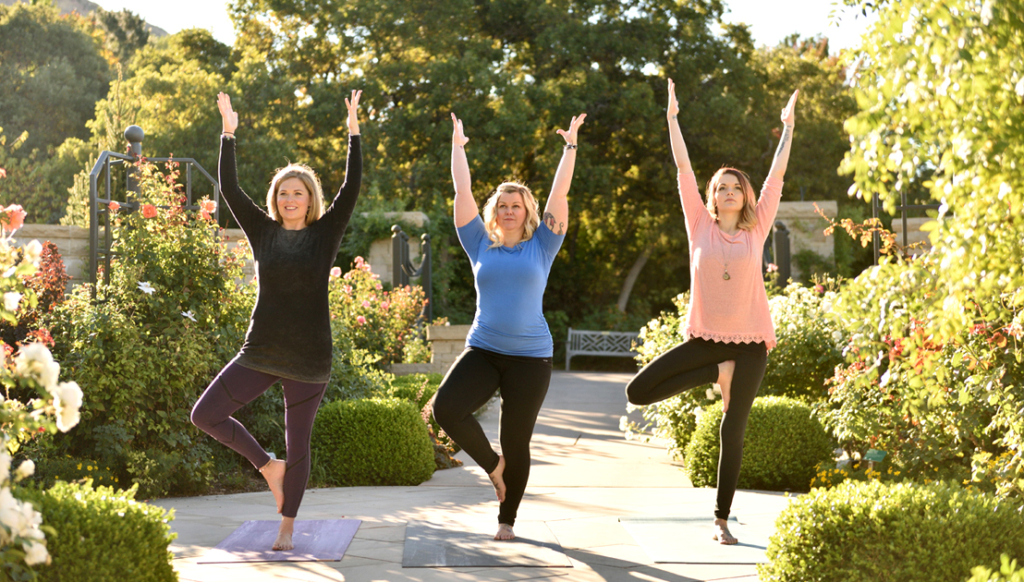This entry was published on July 22, 2025 by Charlotte Bell.

According to Centers for Disease Control (CDC), falls are the main cause of injuries or deaths related to injuries in the elderly in the United States. There are many reasons why older adults are more likely to fall and undergo serious injuries after a fall. The loss of bone and muscle is a natural part of aging, undergoing our strength and our stability. Hearing impairment can affect the capacity of your vestibular system to keep you in balance. Certain common prescription drugs can cause stunning. The good news is that yoga can help. In the next articles, I will make suggestions for yoga practices that can help us develop balance skills. In today’s post, I will describe six factors to consider when creating a practice for a good balance.
A good balance is more than the simple installation of trees
Practicing trees (VRKSASANA) can certainly be part of your equilibrium construction regime. But there is more. Maintaining a good balance during your life requires considering the whole spectrum of the body / mind, and yoga can greatly contribute to the skills that contribute to balance.
Here is a list of what I can be constant equilibrium elements. There may well be more than I have not learned yet. This is an area of study in progress for me, so I would like to hear readers who can share more information.
Element n ° 1: strong and sensitive feet
Our feet are our foundation. And yet, we tend not to give them the attention they deserve. Our feet can lose sensitivity over time, due to neuropathy, keeping them in tight or poorly adjusted shoes and due to general aging. In order to maintain a good balance, our feet must be strong, mobile and sensitive. Force requires using them – walking, running, practicing yoga standing poses. Our toes are intimately involved in balance, so they must be able to move freely. It is also important to be able to feel how our feet are articulated with the ground, so that we can detect when our feet hide unevenly.
Element n ° 2: force of bones and muscles
You might be surprised to learn that muscle mass begins to decrease in our 1930s. It is true and the decrease rate accelerates around 60 years old. Muscle strength and mass are crucial to maintain bone health. Weight exercise such as yoga and strength training can help us maintain the overall health of muscles and bones.
Element # 3: central force
A strong nucleus – abdominal muscles and back muscles – stabilizes the whole body, helping us to maintain a good balance. In turn, balancing exercises can help us maintain a strong kernel. Think of poses such as the installation of boats (Navasana), the installation of bridge (Setu Bandhasana) and the Babybends as the installation of Locust (Salabhasana).
Element # 4: flexibility
It is inevitable that we sometimes lose our balance. But when we do it, it is important that our bodies can recover, which can prevent us from falling when we lose our balance. This means that we must have movement options. A body with steep joints will simply be less likely to stand when we trip, twist the ankle or weaken while walking on uneven soil. Yoga, of course, is particularly suitable for promoting flexibility.
Element # 5: vestibular system
According to the Cleveland Clinic: “The vestibular system includes sensory organs in your inner ear which help you maintain your sense of balance. We are constantly in movement, just like the world around us. The vestibular system, when it works, helps your body understand how you move and how the things around you move to help your balance or your stability. ” Yoga is unique among physical practices insofar as many poses require that our heads are in a position other than straight, which stimulates and strengthens our vestibular system.
Element # 6: concentration
Many falls occur when we just don’t pay attention. We can hike on uneven terrain and think of something else that we trip on a rock and the fall. Or we can practice the installation of trees and lost in thoughts when our balance flicers suddenly. In any case, paying attention to our movements, our environment, our posture, the relationship of our feet on the ground – all these things can help us balance. The practice of mindfulness is essential to help us develop concentration skills.
In conclusion: Build a yoga practice for a good balance
To shape a yoga practice for a good balance, we must consider all these elements. In the coming weeks, and perhaps months, I will share practices that I know to be useful. Yoga can be a wonderful ally to keep us standing. Meanwhile, practice poses you know to strengthen, stabilize, stretch and promote regular balance.
About Charlotte Bell
Charlotte Bell discovered yoga in 1982 and started teaching in 1986. Charlotte is the author of Mindful Yoga, Mindful Life: A Guide for Everyding Practice and Yoga for Meditators, both published by Rodmell Press. His third book is entitled Hip-Healthy Asana: The Yoga Pratitioner’s Guide to Protect of the Hips and Avoid Si Joint Pain (Shambhala Publications). She writes a monthly chronicle for Catalyst Magazine and is online Yoga U publisher. Charlotte is a founding member of the board of directors of Greentree Yoga, a non -profit organization that brings yoga to poorly served populations. Musician for life, Charlotte plays an oboe and an English horn in the Salt Lake Symphony and the Sextuant Folk Red rock Rondo, whose DVD won two Emmy Awards.
